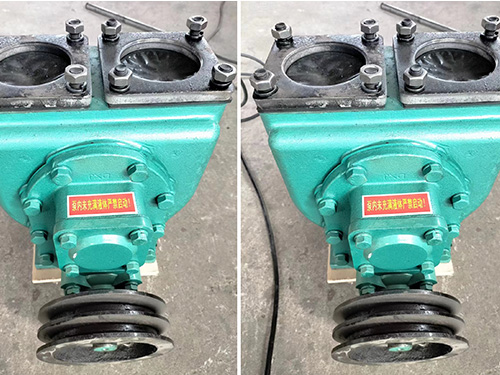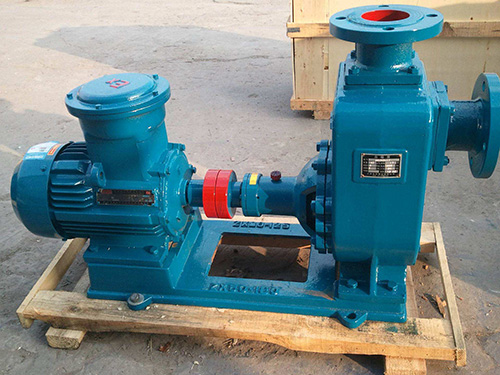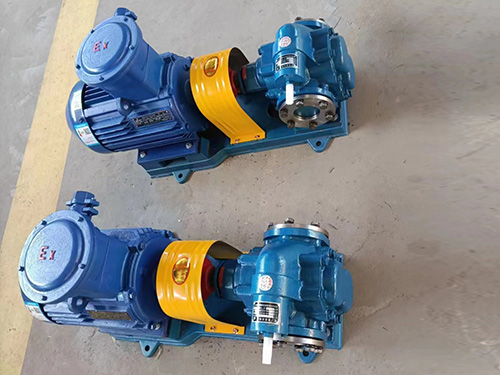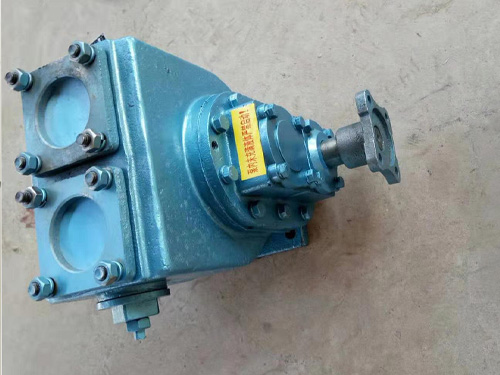Current performance status and future prospects of self suction centrifugal pumps, as well as disassembly sequence
2023-05-28 16:15:53
≪ One> The current performance status and future prospects of self suction centrifugal pumps
The research status and prospects of performance prediction of self suction centrifugal pumps The actual flow patterns inside self suction centrifugal pumps are very complex and far from being understood by people, so the design of pumps is still at the stage of semi theoretical and semi empirical.
. Pump products generally go through a process of design, trial production, testing, and improvement. This tedious process consumes a lot of time, manpower, and financial resources. If the performance curve of the pump can be accurately predicted based on the geometric parameters of the designed impeller, volute and other flow components, it can greatly reduce the cost of model production, trial production, and testing of the pump, and shorten the design and manufacturing cycle. At present, the results of pump performance prediction cannot meet the needs of engineering applications, so in-depth research on pump performance prediction has important theoretical significance and social and economic benefits The flow field analysis method hydraulic loss method is currently a commonly used method for predicting the performance of self suction centrifugal pumps. It is through the analysis of the physical essence and influencing factors of various hydraulic losses, seeking the relationship between various losses and pump structural parameters, and simplifying the assumptions of convective actions to establish a hydraulic loss model. Use different calculation formulas for different losses, and then obtain the performance curve based on the basic equation of the pump. Therefore, the calculation of hydraulic losses has become the key to the hydraulic loss method. The hydraulic loss of a pump mainly refers to the hydraulic loss of the impeller and the pressure chamber. At the same time, the pump also has volume loss and mechanical loss. The essence of the flow field analysis method is to establish the relationship between the internal flow field characteristics of a self suction centrifugal pump and the external characteristics of the pump, which is an important topic in pump research. The main issues include two aspects: first, obtaining the characteristics of the internal flow field of the pump; The second is to establish the relationship between the external characteristics of the pump and the internal flow field. At present, there has been a considerable amount of research on the former, and rich research results have been achieved. However, there is little research on the latter, which is still in its early stages. Artificial neural networks, also known as neural networks, are a network composed of a large number of interconnected processing units. They are an abstraction, simplification, and simulation of the human brain, reflecting the basic characteristics of the human brain. The computing power of artificial neural networks has three significant characteristics: firstly, their nonlinear characteristics; The second is a large number of parallel distributed structures; The third is his learning and inductive ability. Induction refers to the ability of neural networks to generate reasonable outputs for new inputs during the learning (training) process< II The disassembly sequence and technology of vertical self suction centrifugal pumps should be carried out according to the following steps and requirements, based on the preparation work
① Remove the connecting bolts of the flange before and after the outlet valve of the pump on the medium pipeline, and separate the pump from the medium pipeline. Remove the cooling water pipe. Disconnect the coupling between the pump and the motor and remove it from the pump shaft ② Unscrew the pump base bolts, and at the same time, number the gaskets at each base bolt in sequence. When reinstalling, keep them in their original positions to reduce alignment work ③ Disassemble the bearings. First, unscrew the connecting bolts between the front and rear bearing seats and the pump body, remove the bearing seats, and then extract the bearings axially ④ Remove the shaft seal. Unscrew the connecting nut between the gland and the pump body, and extract the gland axially to remove the packing or mechanical seal ⑤ Disassemble the balance plate. Unscrew the connecting nut between the tail cover and the tail section, remove the tail cover, and then take out the balance plate axially. Loosen the connecting screw between the balance ring and the pump body to remove the balance ring ⑥ Dismantling of long rod bolts. The front, middle, and tail sections of a segmented pump are fixed together by several long bolts, forming a complete pump body. These bolts are also called long rod bolts. When tightening the long rod bolts, the axial sealing surfaces between each section are tightly fitted, preventing the pressure medium in the pump chamber from leaking outward. Excessive tightening force of long rod bolts can cause damage to parts; If the tightening force is too small, the sealing surface will leak. Some manufacturers provide the pre tightening force value of long rod bolts in the instruction manual. When assembling after repair, tighten the bolts according to the specified value; Most manufacturers do not provide the pre tightening force value for long rod bolts, which requires that during on-site maintenance, the tightening force should be moderate based on the comparison of the tightening length before and after disassembly. A simple approach is to number each long rod bolt and its corresponding nut in sequence before disassembly, for example, number 1, 2, I3,... clockwise, and number the other end counterclockwise. The corresponding bolt hole of the bolt should also be numbered accordingly, so that the bolt and nut can still be reinstalled in their original place. Polish the bolt end face and nut end face clean with sandcloth, and measure the length of the nut exposed at both ends of the same bolt When assembling, use the same method to measure and calculate the value, so that the value is equal to the value before disassembly. Record the extension of the long rod bolt of the segmented self suction centrifugal pump as an example After measuring and recording, start dismantling the long rod bolts. When removing the long rod bolts, keep two at a distance of 180 ° to prevent the front, middle, and tail sections from suddenly falling apart and damaging the rotor or other parts To avoid bending the pump shaft due to the middle section falling down, temporary support should be added to the lower side of the middle section when removing the long rod bolt ⑦ Disassemble the tail section volute. Gently tap the flange of the tail section with a hammer to loosen it and remove it ⑧ Disassemble the tail impeller. The fit between the impeller and pump shaft is a clearance fit, but due to the action of the medium, it may rust together. When disassembling, gently tap around the impeller with a wooden hammer to loosen it, and then extract it axially Dismantle the middle section. Use a pry bar to pry around the middle section to remove it. Remove the gear sleeve on the pump shaft between the impellers. Then, the population sealing ring and guide wheel can be removed from the middle guide wheel Using the same method, remove the remaining impeller and middle section until the suction cover is reached After disassembly, bearings, shafts, mechanical seals, etc. should be cleaned with kerosene to check for damage, excessive wear or deformation, and decide whether to repair or replace them. Remove the gasket between each section and remove rust
The YHCB high flow pump has the characteristics of large flow rate, high head, small settli...

The CYZ centrifugal pump adopts an axial return liquid pump body structure, which is compos...

Copper gear pump (KCB type) is suitable for conveying lubricating oil or other liquids with...

The car mounted circular arc gear pump can be installed on the car and driven by the output...



